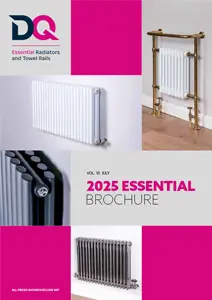Easy to recycle aluminium
Aluminium isn’t just simple to shape, it’s also very environmentally friendly. Aluminium radiators are 100% recyclable, and they are often made from recycled materials, too. So this is one area where there isn’t much difference between stainless steel and aluminium. It’s a different story where costs are concerned, however. Aluminium radiators tend to be more expensive than stainless steel models. But they look amazing, are resistant to rust, and are very energy-efficient.
Our Vela aluminium radiator sports a contemporary flat panel design with a lower water content. It’s available in vertical and horizontal versions, and offers multiple options including a practical polished towel bar and electric-only models
In summary, each type of radiator material has different benefits. The best choice for one person might not suit another. My advice would be to think hard about your heating requirements, priorities, personal style preferences and budget, before making any decisions. But whichever material you ultimately decide on, we’re sure to have an option to suit. As a family-owned business with more than 20 years of experience, we’re happy to provide pre-sales advice on anything from technical issues to pipework dimensions – and everything in between!
















